Asbestos concrete water pipe | Asbestos in drinking water
Table of content
- first of all what is asbestos ?
- What is asbestos cement ?
- Asbestos cement pipe in Canada
- How are asbestos concrete water pipe are made ?
- Why asbestos cement pipes were used ?
- Maintenance and aging of asbestos cement water pipe
- Risks and dangers associated with the deterioration of asbestos water pipes
- Diseases linked to asbestos ingestion
- Asbestos in drinking water
- Studies carried out concerning asbestos drinking water
- Methods used to test drinking water likely to contain asbestos fibers
- How to test for asbestos in drinking water ?
- An asbestos fiber is 200 to 4000 times smaller than a human hair
- Free Quote
First of all what is asbestos
Asbestos is a group of naturally occurring minerals made up of thin, strong fibers. These fibers are resistant to heat, fire and many chemicals, which has led to their use in a variety of building materials, insulation, textile products and other industrial applications. The unique physical properties of asbestos have led to its widespread use in the past, particularly during the 20th century.
There are two main types of asbestos: chrysotile, also called white asbestos, and amosite, anthophyllite, crocidolite, actinolite and tremolite, often grouped together as amphibole asbestos.
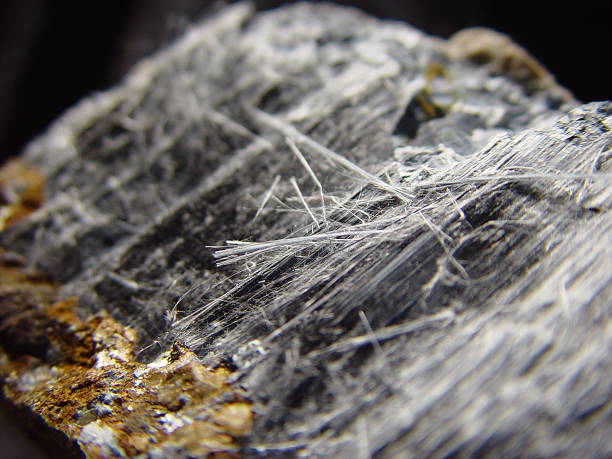
Although asbestos has been widely used due to its useful properties, it has been shown that exposure to asbestos can lead to serious health problems. Inhaling asbestos fibers can cause respiratory diseases, including asbestosis, and is also associated with an increased risk of certain cancers, including lung cancer and mesothelioma, a cancer of the pleura or peritoneum.
Due to the health risks associated with asbestos, many jurisdictions have implemented strict regulations limiting or prohibiting its use, especially in new products. Efforts are also being made to safely remove asbestos from older buildings and infrastructure to reduce potential human exposure.
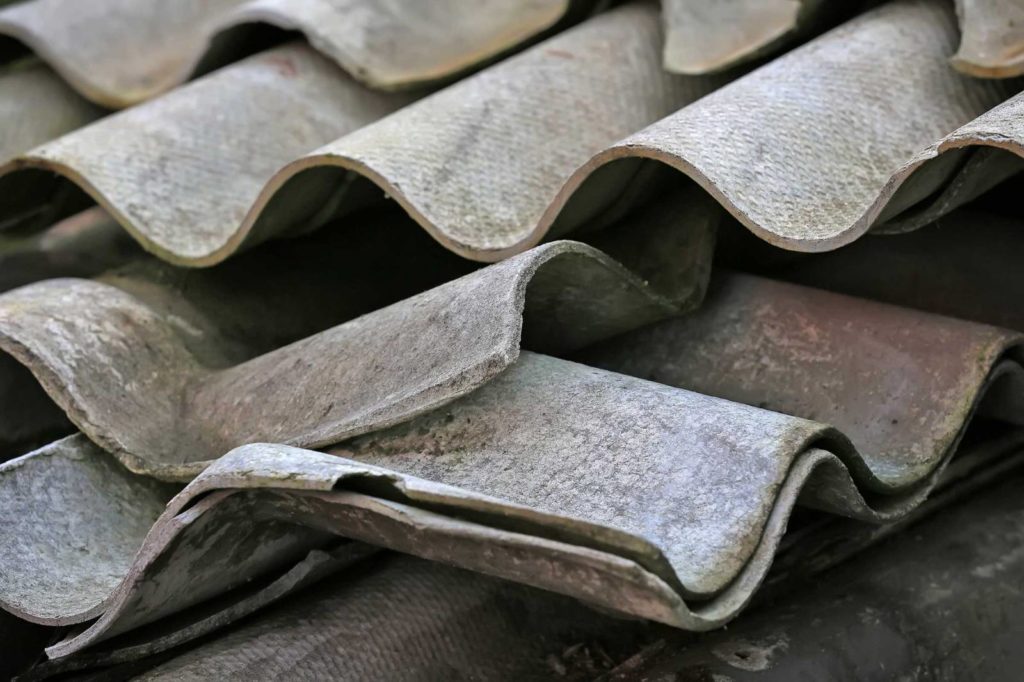
What is asbestos cement ?
The material known as asbestos cement, asbestos cement or asbestos fiber cement, is made from a mixture of asbestos fibers dispersed in a hydraulic binder, which is cement. It has been used to manufacture various products such as plates, slabs, noise barriers in Canada, corrugated sheets for roofing, tiles, pipes for storm drainage or aqueduct, waste pipes for chimneys, vents, etc.
Initially, the manufacturers claimed that it was a very stable and safe product, which turned out to be inaccurate. For example, chimney pipes, whose cement deteriorates under the influence of acid vapors, release asbestos fibers, as do water supply pipes, particularly when the water is naturally acidic.
Compared to many alternative materials, the weight of asbestos-cement pipes makes their transportation and installation expensive, especially for pipes 23 mm and larger. In France, the two main producers were the Eternit group and Saint-Gobain.
Since the asbestos scandal, this product has been banned in France and in several countries from 1996, although certain uses have been tolerated in various countries, such as brake pads and certain seals. Europe finally implemented a complete ban on the use, consumption and marketing of asbestos (in all its forms, including fiber cement) from January 1, 2005.
However, Quebec continues to promote the safe use of asbestos, particularly in the field of plumbing, under an agreement concluded with Canadian asbestos producers.
Asbestos cement pipe in Canada
Asbestos cement pipes were commonly used in Canada for water distribution and sewage systems, particularly during the mid-20th century. These pipes were known for their durability, resistance to corrosion, and fireproof qualities. However, the use of asbestos in construction materials, including asbestos cement pipes, has declined significantly due to the recognized health risks associated with asbestos exposure.
In Canada, as in many other countries, there are regulations and guidelines in place to manage and control asbestos-containing materials. Asbestos is a known carcinogen, and its use in construction materials has been heavily restricted or prohibited in many jurisdictions.
How are asbestos concrete water pipes are made?
The manufacture of asbestos-cement pipes involves the use of asbestos as a reinforcing material mixed with cement. Here are the general steps in the asbestos cement pipe manufacturing process:
- Preparation of Materials: The main materials used are Portland cement, asbestos, aggregates (such as sand or stone dust), and water. Asbestos, in the form of fibers, is often mixed with other materials to strengthen the mixture.
- Mixing Materials: Materials are mixed homogeneously in specific proportions. The cement acts as the binding matrix, while the asbestos fibers provide strength and durability to the mixture.
- Pipe Forming: The mixture is introduced into molds designed to form pipes. These molds can have the specific shape and size of the final pipe.
- Hardening: The molded pipes are then placed in a controlled atmosphere to allow the cement to harden and gain strength. This process is called curing.
- Demoulding: Once the cement has reached the necessary strength, the pipes are demoulded. They can then be subjected to finishing processes, such as surface smoothing.
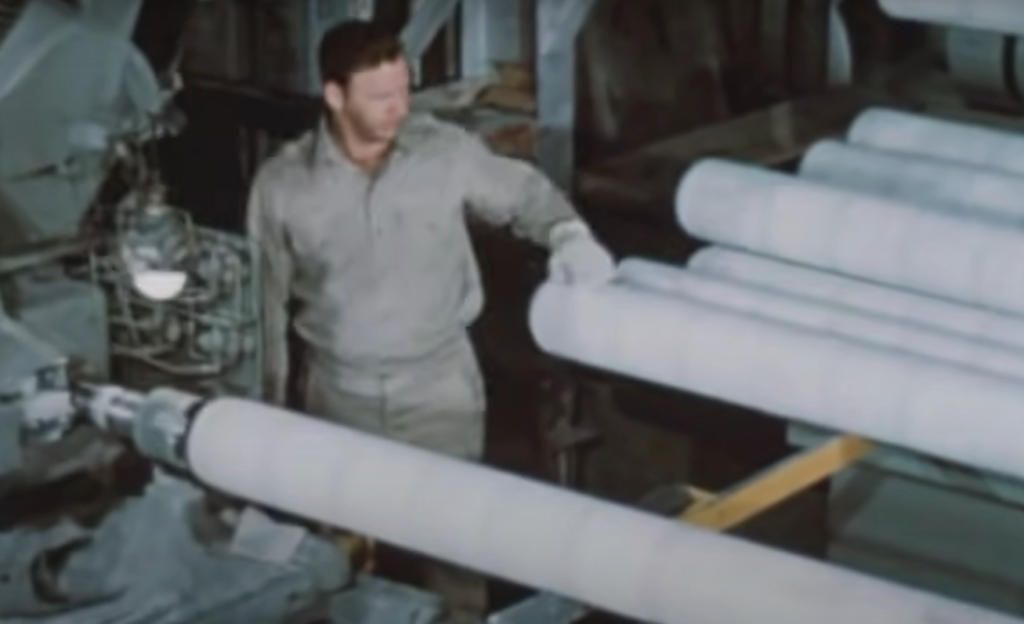
Why asbestos cement pipes were used?
Asbestos-cement pipes were widely used during the 20th century due to several advantageous properties of the material, but their use declined as the health risks of asbestos became better understood. Here are some reasons why asbestos cement pipes have been popular:
- Strength and Durability: Asbestos cement is a material known for its strength and durability. Pipes made from this material were able to resist corrosion and weathering, making them suitable for outdoor applications and water distribution systems.
- Lightweight and Easy to Handle: Asbestos cement pipes are relatively lightweight compared to other materials, making them easier to handle, transport and install.
- Fire Resistance: Asbestos cement has a natural resistance to fire, which made it an attractive choice for certain applications, particularly in areas where fire protection was a concern.
- Relative Cost: At times, asbestos was considered an economical material due to its availability and physical properties. This has contributed to its popularity in various construction applications.
However, over time, serious concerns have emerged about the health risks of inhaling asbestos fibers. Asbestos is a known carcinogen, and exposure to its fibers can lead to serious illnesses, including lung cancer and mesothelioma.
Maintenance and aging of asbestos cement water pipe
According to a study carried out in Canada in 2007, the main risk factors for failure of asbestos-cement pipes are, in order of importance: their aging (asbestos-cement ages less well than cast iron pipes, for example example), the diameter of the pipe, the climate, the more or less clayey nature of the soil (which can generate physical constraints linked to the shrinkage-swelling phenomenon of clays) and the construction/maintenance methods. In cold or temperate regions, climate and clay soil conditions appear to be the two critical factors.
Chemical attacks from water (more or less corrosive, possibly hot and/or under pressure) can damage the interior of the pipe, while the possible aggressiveness of pore water from the ground can also compromise the structural integrity. water pipes. In seismic zones, there is an increased risk of cracking and rupture.
The dismantling, replacement or maintenance of asbestos-cement pipes should be planned more rigorously, and this work may be subject to administrative controls.
Risks and dangers associated with the deterioration of asbestos water pipes
Contamination of groundwater or waterways: Asbestos can sometimes come from sources or aquifers that naturally contain asbestos, particularly in the context of serpentine rocks. In the 1980s, for example, flooding of the Arroyo Pasajero as well as the Cantua and Salt rivers was found to have introduced significant quantities of chrysotile asbestos fibers into the Great California Aqueduct.
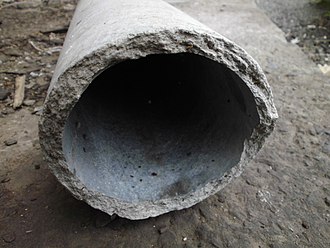
Subsequently, these sediments were dredged to reduce the risk of asbestos being resuspended in circulating water. California’s water resources are among the most affected by asbestos contamination in the world, and filtration systems have demonstrated, according to a 1984 study, “widely varying success in removing fibers.” asbestos”. The high initial concentrations then seemed more difficult to eliminate.
More recently in Quebec in 2022, sampling carried out in the Bécancour rivers in Thetford Mines demonstrated a significant number of asbestos fibers which are dumped from the dumps (mountains) of asbestos mining residues.
Fiber contamination of asbestos-cement water pipes: This is the most common scenario. Contamination rates are generally below one million fibers per liter, although, according to Weber (1991), concentrations as high as one billion fibers per liter have already been exceeded. In Tuscany, among 59 tap water samples analyzed between 1995 and 1996, 24% contained asbestos, often with concentrations exceeding 38,000 fibers per liter.
In 79% of cases, the likely source was asbestos-cement pipes, although these were exposed to aggressive acidic and/or mineral-poor water in only 3% of cases. In 21% of cases, the contamination could have come from an aquifer naturally rich in asbestos. Some sewage pipes are also made from asbestos cement.
Deterioration of asbestos cement pipes can pose potential health risks due to the release of asbestos fibers into the environment. Asbestos cement is a material that has been widely used in the construction of drinking water and sewerage pipelines due to its durability and corrosion resistance. Now imagine what an asbestos fiber that is resistant to fire and corrosion can do to the human body.
Diseases linked to asbestos ingestion
Some of the asbestos fibers that we ingest can pass through the intestinal wall, where they can become incorporated or, on the contrary, enter the bloodstream. Some of these fibers are then partially eliminated in the urine. Another fraction accumulates in various tissues and organs, with a high concentration of asbestos recently detected in colon cancers in workers exposed to asbestos.
In 1991, JS Weber and JR Covey of the New York State Department of Health recommended reducing asbestos levels in drinking water systems by focusing on actual and potential sources of asbestos.
As early as the 1980s, epidemiological and laboratory animal studies had established a correlation between asbestos ingestion and an increased risk of several types of cancer (although these results were contradicted by other studies). This association was confirmed by two large studies carried out on humans in 2015 and 2017, revealing a link with at least two types of cancer.
Published studies have demonstrated that the ingestion of asbestos fibers can be associated with several diseases. The main diseases linked to exposure to asbestos, including through ingestion, include:
- Esophageal cancer
- Stomach cancer
- Liver cancer
- Pancreatic cancer
- Colon Cancer
- Small intestine cancer
Unlike other countries which have established standards concerning the concentrations of detectable asbestos fibers in drinking water as well as changes to asbestos-cement pipes, the Government of Quebec and Canada are late. Contrary to expectations, the Quebec government was unable to begin the process of sampling drinking water which was to take place in 2022 in municipalities with asbestos-cement pipes, with the aim of verifying whether citizens are exposed to risks. In Quebec alone, there are no less than 1000 KM of asbestos-cement pipes that are made of asbestos cement.
Asbestos in drinking water | Asbestos in concrete
Asbestos cement is a composite material in which asbestos is mixed with cement to form a strong and durable product. This material was widely used in construction, especially between the 1920s and 1980s, due to its beneficial properties, such as heat resistance, durability and corrosion resistance.
In Canada, the use of asbestos-cement pipes was widespread between the 1930s and 1980s. These pipes were commonly used in drinking water supply and sanitation systems during this period due to their properties, including their corrosion resistance and durability.
However, due to growing concerns about the health risks associated with asbestos exposure, its use has been gradually reduced over time. Building regulations and standards have evolved to limit or prohibit the use of asbestos in various products, including pipes.
Although the industry is prohibited from selling and using these pipes in the future, there appears to be no federal plan to remediate the thousands of miles of rotten asbestos-cement pipes that bring water to millions of homes, businesses and schools in Canada.
Studies carried out concerning asbestos drinking water
It is important to note that asbestos in drinking water can pose a health risk, and studies have been conducted to assess these risks and develop water quality guidelines. Health authorities and regulatory agencies, such as the World Health Organization (WHO) and the Environmental Protection Agency (EPA) in the United States, have established guidelines and standards for the concentration of asbestos in drinking water.
Studies regarding asbestos in drinking water have focused on the effects of asbestos ingestion on human health. Asbestos is primarily linked to respiratory problems when inhaled, but studies have also examined the risks of ingesting it.
Methods used to test drinking water likely to contain asbestos fibers
Elsewhere in the world, standards have been established regarding the number of asbestos fibers per liter of water. The United States established a standard for asbestos in drinking water in 1985, following a high-profile lawsuit against a mining company that dumped waste from an asbestos plant into Lake Superior.

The standard established by the WHO is 7 million asbestos fibers (more than 10 micrometers in length) per liter of water. Which, according to many scientists, is a much too high standard.
A micrometer corresponds to one thousandth of a milimeter. According to the American Environmental Protection Agency, ingestion of asbestos fibers increases the risk of intestinal polyps as well as causing several cancers of the digestive system.
How to test for asbestos in drinking water ?
Testing for asbestos in drinking water is a complex process that typically requires specialized equipment and professional assistance. Here’s a general guide:
Contact a Professional Testing Service: Reach out to a certified environmental testing laboratory or a specialized asbestos testing service. These labs have the expertise and equipment needed to perform accurate tests.
Provide Information: Provide the testing service with information about your water source, any history of asbestos use in the area, or any specific concerns you may have.
Sample Collection: Follow the instructions provided by the testing service for collecting water samples. It’s crucial to use the appropriate containers and procedures to avoid contamination.
Submit Samples: Send the collected water samples to the testing laboratory as instructed. Make sure to label the samples accurately and provide any necessary documentation.
Wait for Results: Wait for the laboratory to analyze the samples and provide you with the results. The time it takes to receive results can vary, so inquire about the expected turnaround time.
Interpret Results: Once you receive the results, the laboratory should provide information on the presence or absence of asbestos in your drinking water. If asbestos is detected, consult with the testing service or local health authorities for guidance on the next steps.
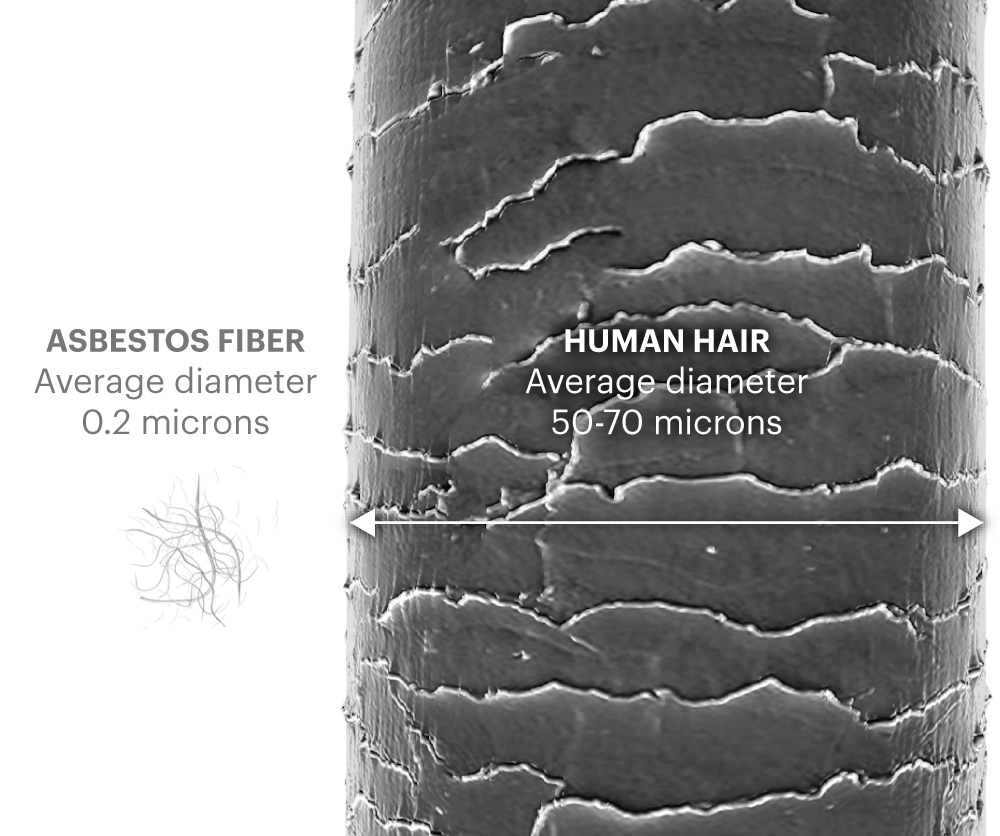
An asbestos fiber is 200 to 4000 times smaller than a human hair.
Asbestos fibers are extremely fine, typically measuring between 200 and 4,000 times smaller than a human hair. This means that these fibers are microscopic and can be inhaled deep into the lungs when suspended in the air.
The very fine size of asbestos fibers is one of the reasons why they pose a high health risk when inhaled, as they can penetrate deep into lung tissue and cause various health problems, including serious illnesses such as asbestosis and cancer.
How to avoid ingesting asbestos fibers ?
The best way to protect yourself is to remove it from the water. This can be done easily with a point-of-use water filtration system certified for asbestos abatement by NSF International under Standard No. 53: Health Effects.
NSF/ANSI Standard 53 is a standard developed by NSF International (formerly known as the National Sanitation Foundation) to establish performance and safety criteria for water filtration systems. NSF/ANSI Standard 53 specifically focuses on filtration devices intended to reduce certain contaminants found in drinking water.
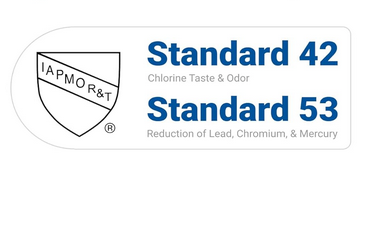
Water filtration systems that are certified to NSF/ANSI Standard 53 have demonstrated effectiveness in reducing specific contaminants according to the criteria defined by the standard. Some of the contaminants covered by NSF/ANSI 53 include substances such as
-
Lead
-
Mercury
-
Arsenic
-
Cryptosporidium
-
Giardia
-
Cryptosporidium
-
Herbicides
-
Pesticides
-
Benzene
-
Radon
-
PCBs
-
MTBE, Trihalomethanes.
-
PFAS/PFOA (forever chemicals)
-
Asbestos fibers and
-
Microbiological
When choosing a water filtration system, especially for your home use, it is recommended that you look for products certified to NSF/ANSI standards, as this can provide you with assurance that the product meets performance criteria and safety standards established by an independent organization.
It is important to note that NSF/ANSI 53 certification does not cover all possible contaminants, and other standards, such as NSF/ANSI 42, may also be relevant depending on the specific contaminants you are seeking to eliminate from your water.
What NSF42 prevent ?
NSF/ANSI Standard 42 (NSF 42) focuses on water treatment systems designed to improve the aesthetic qualities of drinking water. Specifically, NSF 42 does not address health-related contaminants but rather targets non-health-related issues that affect the taste and odor of water. Here are the key aspects that NSF 42 helps prevent:
Chlorine and Chloramine Reduction: NSF 42-certified systems are tested and certified to reduce the levels of chlorine and chloramine in water. Chlorine is commonly used as a disinfectant in municipal water treatment, and its presence can impart a taste and odor to the water. Chloramine, another disinfectant, is used in some water treatment processes.
Taste and Odor Improvement: The standard addresses contaminants that contribute to undesirable tastes and odors in water. This includes the reduction of substances like iron, manganese, and other particulates that may affect the overall aesthetic quality of the water.
Particulate Reduction: NSF 42 covers the reduction of certain particulate matter in water, contributing to the improvement of water clarity and appearance.
Performance Requirements: NSF 42 establishes performance requirements for point-of-use (POU) and point-of-entry (POE) water treatment systems. The certification ensures that these systems meet specific criteria for the reduction or removal of taste- and odor-related contaminants within defined limits.
It’s important to note that NSF 42 does not address health-related contaminants such as bacteria, viruses, heavy metals, or other substances that may pose risks to human health. For health-related concerns, other NSF standards, such as NSF/ANSI Standard 53, may be more applicable, as they focus on the reduction of specific health-related contaminants.
Possible options to prevent your exposure to contaminants in drinking water
The ZeroWater pitcher is one of the available options that is sold on the Amazon platform is a water filter that aims to provide cleaner drinking water by removing impurities, contaminants and particles. Here are some common features associated with ZeroWater pitchers:
- 5-Stage Filtration Technology: ZeroWater uses a 5-stage filtration system to remove impurities from water. These steps include activated carbon filtration, ion exchange resin, hollow fiber membrane and another ion exchange resin, followed by carbon filtration.
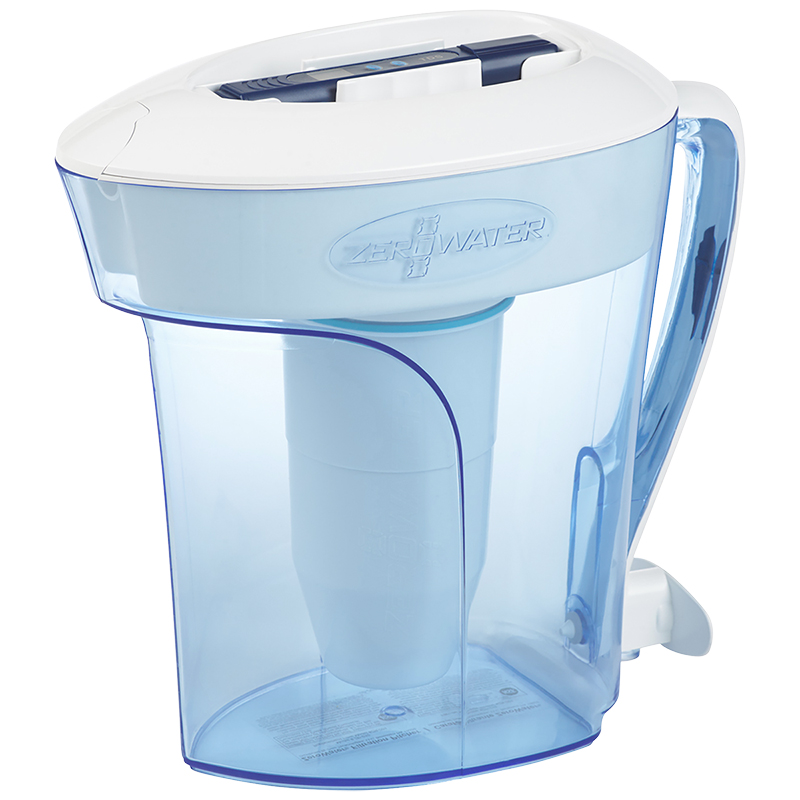
- Water quality indicator: Some models of ZeroWater pitchers are equipped with a digital water quality indicator. This indicator measures the level of total dissolved solids (TDS) in the water, which can give an idea of the purity of the filtered water.
- Reduction of TDS: The main objective of ZeroWater is to reduce TDS in water, including minerals, salts and other impurities.
- Convenient Design: ZeroWater pitchers are designed to be convenient to use. They often range in capacity from a few cups to several quarts, and the filter is usually placed in the lid of the pitcher for easy access.
- Regular filter replacement: Like any filtration system, ZeroWater filters must be replaced regularly to maintain optimal efficiency. How often you replace it depends on the quality of the water you are filtering and how often you use the pitcher.
It is important to note that the effectiveness of ZeroWater filters may vary depending on the quality of the starting water.
